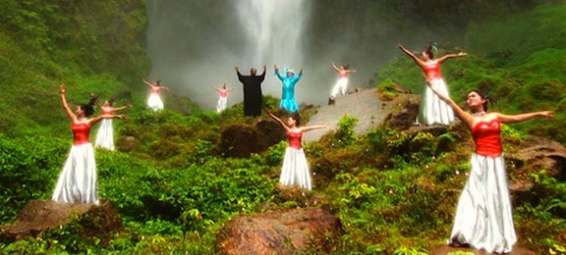I hesitate to call Joshua Oppenheimer’s documentary The Act of Killing a great film. It is undoubtedly an achievement of incredible stature: a breathtaking, unforgettable piece of filmmaking. In a number of ways, it is unlike any other movie that has ever been made, blending fiction and non-fiction, reality and fantasy, in eerie and revealing fashion. It is a film that already feels part of the essential cinematic canon. And some of its scenes will burn into your memory, images so odd and mysterious, so rich in unspeakable horror, so surreal, strange, or absurd that you will have a difficult time shaking them loose from your consciousness. It has been a few days since I’ve seen it, and those images haven’t stopped haunting me.
And yet, given the horrific insight into the nature of humanity The Act of Killing conjures, it doesn’t feel right to call it “great.” Everything in the film, in fact, is terrible. The movie concerns the mass killings in Indonesia that took place in the mid-1960s. Paramilitary groups, operating with the implicit blessing of the government, abducted and murdered millions, accusing them of being communists. Villages were sacked and burned to the ground; men marauded homes, raping and killing entire families on a whim. An open-air balcony visited in the film was the setting of so much carnage that the executioners had to improvise more efficient tools of murder to cut down on the over-saturation of blood.
The Act of Killing provides only a cursory historical context for the killings. Instead, it introduces us to the murderers, who are not only still living freely in their home country, but are revered as folk heroes. Here is where The Act of Killing takes a strange, inspired turn. Rather than making a straight non-fiction film about the murders, Oppenheimer instead invites the murderers to retell their own story. The gangsters stage vicious scenes under the auspices of making a fiction film about their own history, often employing the genres of the American films that inspired their dirty work to re-create the horrifying settings of mass murder.
Oppenheimer’s approach to his material creates a complex, multifaceted film. It is not enough to say it blends fact and fiction; rather, fiction becomes an active agent in the film, working on the authors and gradually exposing some of them to greater empathy for their victims. This is little payoff. What dominates The Act of Killing is a sense that the gangsters took cruel, perverse pleasure in their crimes. But to what extent is this sense affected by the relationship between the camera and the subject? How is reality warped by the activity of filming? The idea of non-fiction filmmaking itself becomes one of the film’s many subplots.
As they did in the 1960s, the gangsters force innocent Indonesians into the service of their vicious game. Some of the most unforgettable moments in The Act of Killing come when villagers reenact a mass killing. When the director/gangster yells “cut” after the feigned attack, the children in the scene keep crying. For them, it is difficult to discern the boundary between the fear and suffering unleashed by fact or fiction. These scenes are jarring, but just as frightening are more surreal visions, in which the gangsters orchestrate strange utopian scenes, rich and colorfully pastoral moments featuring waterfalls and beautiful, young dancing girls, immortalizing themselves as saint-butchers.
The Act of Killing raises many important questions about the nature of murder, about the human beings who commit it, the society that allows it, the politics that justify it, and the art that obscures, objectifies, desensitizes, or exposes it. But the film’s most searing inquiry and implication is bound up in the same philosophical material explored by Fyodor Dostoevsky in Crime and Punishment. What is it to kill, and is the wrongness of killing merely an expression of a socially constructed morality — or is there an absoluteness to the immorality of murder?
It’s a question that can’t fully be answered in the film. In some instances, the condoning and corrupt Indonesian government and the lies some of the murderers tell themselves suggest that history’s victors can forge their own morality. But the final and most powerful moments conjure something else. These moments are so raw and simple, yet profound and soul shaking. They suggest something about human nature that can’t be photographed or explained, but, through Oppenheimer’s art, is forced violently to the surface.






